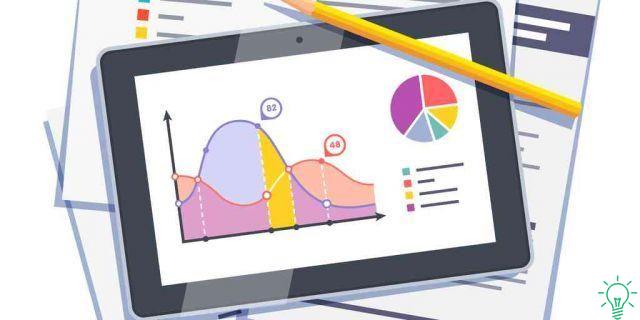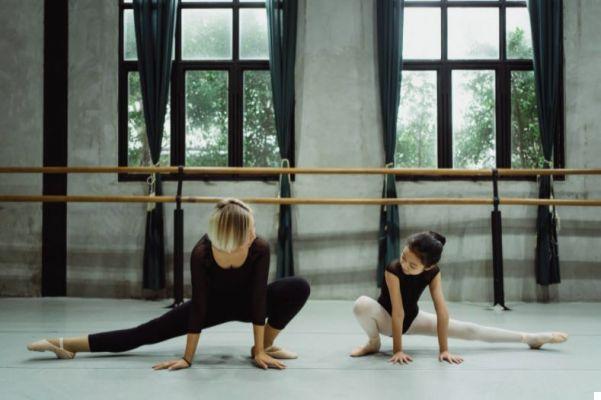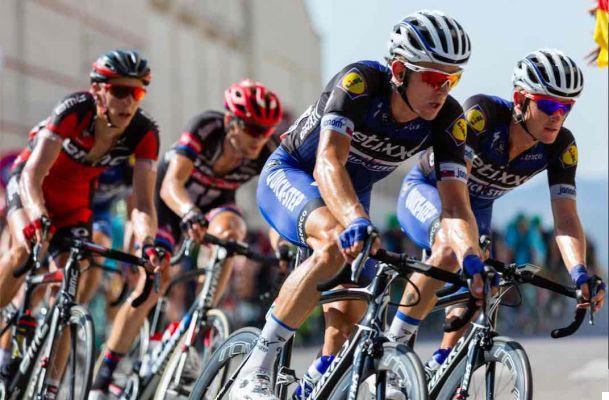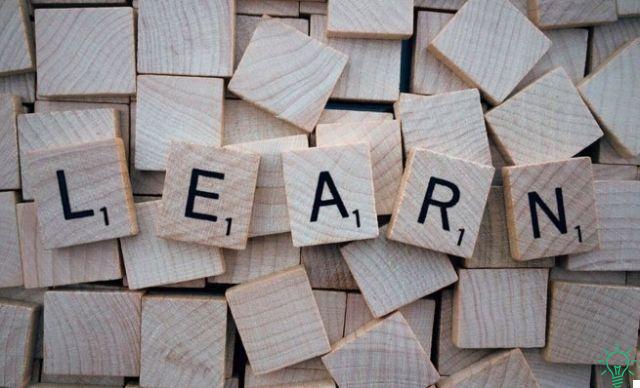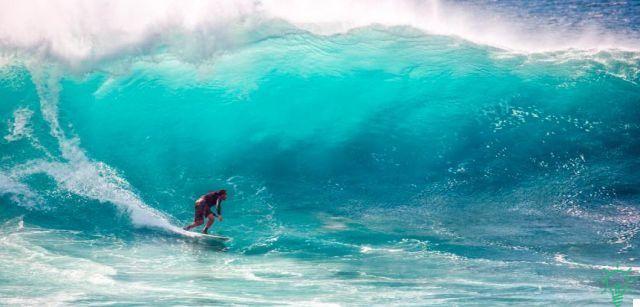
Flow is the very source of intrinsic motivation ”Jamie Wheal, Executive Director of the Flow Genome Project
Have you ever been so immersed in an activity that you lose track of time, clear your mind of all distractions and be focused entirely on what you are doing?
An activity that, while absorbing you completely, does not generate anxiety, stress and worry, but a feeling of completeness, contentment, harmony, as if you were immersed in a current of water that envelops and drags you gently?
Here, it means that you were in a state of flux.
The flow, or flow or state of flow is a state of consciousness in which an individual is so involved in the activity he is performing that he reaches very high levels of emotional satisfaction and performance.
This is a relatively common experience in sports (many refer to it as a "competitive trance"), but it can occur in any human activity.
At the brain level, it is characterized by the simultaneous secretion of a truly unique cocktail of neurotransmitters:
- Norepinephrine to dopamine, which have the task of promoting concentration
- Endorphins, which are powerful natural pain relievers
- Anandamide, a molecule that has the same receptors as cannabis and appears to have, among other things, an anxiolytic effect
- Serotonin, which has a strong positive action on mood, so much so that it is often called "the hormone of happiness"
The action of these molecules externally translates into an increase in performance associated with a state of mind great serenity and satisfaction.
For this reason, the state of flux is a potential goldmine from a productivity, well-being and outcomes standpoint.
In fact, if you can, at the same time, to focus, to work hard and to be happy while doing it, it is clear that infinite possibilities open up to you and you can really accomplish almost anything.
For this reason, ever since - in the 70s - Mihaly Csikszentmihalyi theorized and popularized the concept of flow, many psychologists have dedicated themselves to understanding how it is possible to favor the establishment of this real state of grace.
And they have thus identified some typical traits that characterize it and that you must learn to look for if you want to achieve it.
1. Clear objectives
When the result you have to achieve is not clear, when the instructions are smoky, when you don't know exactly what your point of arrival must be, anxiety and uncertainty are generated, emotions that are enemies of the state of flux.
This is why it is so important, when starting a business, large or small, to have clear goals.
2. Total concentration on the task
We are continually subjected to dozens of different stimuli and have an amazing ability to distract ourselves.
If you want to work in a state of flow you must instead learn to put, between you and the outside world, a filter that, when needed, blocks all distractions, to make you concentrate fully on the task you are doing.
3. Loss of self-awareness
Often, it is the mental dialogue that we continually engage in with ourselves that distracts us. Dialogue mostly focused on anxieties and problems that do not concern the here and now.
Suppress our EGO, leave the past and the future aside for focus on the present moment, it is a liberating, almost cathartic experience, on which part of the sensation of pleasure that is generated when you are in a state of flux depends.
4. Feedback
We've blogged many times about how important feedback is to improve performance and overcome anxiety.
The fact is that the human mind was shaped in an environment - the so-called immediate return environment of primitive man - in which gratifications (or punishments) were immediate, so that we immediately knew which behaviors were useful and which were harmful.
Without this immediate feedback, a bit like when we are without clear objectives, the enemies of the state of flux make room: uncertainty and anxiety.
5. Balance between challenge and ability
An activity, to be truly stimulating, must be neither too easy (it would bore you), nor too difficult (it would only lead to frustration).
A bit like in sports or games, where if the opponent is too scarce or too stronger than you, there is no fun.
While if the opponent is difficult, but you still have the chance to beat him, you can have fun and really engage.
6. Sense of Control
It is a feeling that is a bit of a mixture of several of those seen so far.
If you don't know what the variables are at stake, if you don't feel you are able to control the situation, anxiety and uncertainty take over the positive aspects of the experience.
But how does one come to feel in control? By training, preparing, developing the necessary skills to carry out the specific task you have to dedicate yourself to.
7. Intrinsic pleasure
Flow can only be achieved in activities that you basically enjoy.
Otherwise, even respecting all the previous points, it is almost impossible for you to reach a state of flow.
But consider one thing: among the elements that characterize the experience of flow, there is often a strong connection.
So when a business meets the requirements we've seen so far, it's also normal for you to like it.
_ _ _ _ _ _ _ _
The 7 elements we have just seen make up a real checklist that can guide you to achieve the state of flow in every activity you dedicate yourself to.
And so, as you study or work, you may for example find that your goals need to be defined more clearly.
Or maybe that you move in an environment that does NOT adequately protect you from distractions.
Or that you are too busy mulling over this or that problem to really pay attention to what you are doing.
Here then, with well-studied choices and strategies, you can intervene on each of these aspects to improve it.
Analogies between the state of flow and play
Looking at the characteristics that an activity “in the flow” must have, it struck me that they are exactly the same ones found in many games: the need for clear rules and objectives, the presence of feedback (for example in the form of a score), having a stimulating but not unbeatable opponent in front of you, the pleasure that comes from mastery the skills needed to play ...
This, if you think about it, can lead to a real paradigm shift compared to the way you have so far conceived the activities you dedicate yourself to.
We are in fact used to reasoning according to a perspective in which leisure and work, study and vacation, effort and reward, are antithetical moments, which alternate with each other.
We assume that our time is divided into an alternation of (long) periods of sacrifice and fatigue and (short) periods of vacation, relaxation, distraction.
Here instead - in my opinion this is its most relevant aspect - the flow theory and the researches carried out tell us about it which does not necessarily have to be like this.
Actually.
They claim that it is precisely when we are active and busy in something relevant that we can reach our emotional and mental peak.
As he says Mihaly Csikszentmihalyi
Contrary to what we usually believe, the best moments of our lives they are not passive, relaxing ... The best moments usually occur when a person's body and mind are pushed to their limits in a voluntary effort to accomplish something difficult and worthwhile.
Understanding this means completely changing our attitude towards what we do.
It means moving from a mentality in which study and work are tiring but necessary means, to a mentality in which they are an end that can in itself be a source of pleasure and satisfaction.
It is no coincidence that I often recommend that my students introduce a little gamification * into their study habits, to make it more engaging and satisfying.
(Gamification: Use of typical game mechanisms - e.g. points, levels, times, prizes, rankings - in contexts other than the game).
Which does not mean at all that you will never have to struggle again ...
Flow or flow: the fatigue of flying
Have you ever surfed?
You enter the water, you swim towards the waves lying on the board, you pass them one after the other, you try to catch one but you make a mistake, you calm down patiently, you start swimming again, you try again .. and here, at a certain point, the moment is right, so you jump to your feet and a moment later you are "flying" over the water.
It's wonderful, but it lasts a few seconds and then it's time again to start swimming again offshore.
Something like this also happens with flow.
Every day it happens that one starts to write, or to study, or to work on a project, or to train on a certain pattern ... and it does so with a great initial effort, perhaps distracting, perhaps combining little and struggling a lot.
Then, at some point, the right wave arrives: total clarity is created in the mind, the body moves with precision, everything happens easily and naturally.
You entered the flow! It may then last a few minutes or a few hours, but in the end you will still have to get off the carousel and return to swim out to sea.
Its part of the game.
And if you ask any surfer, they'll tell you that that part that precedes each glide, that strenuous swinging through the waves while scanning the horizon, is almost as enjoyable as the glide itself.














